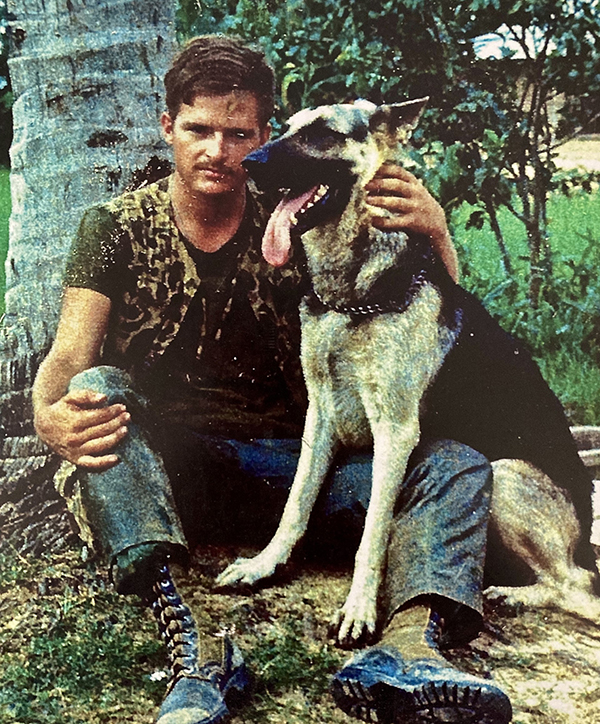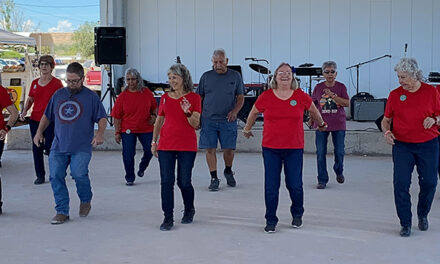In 1968, a senior at the University of New Mexico, John Padoven volunteered for service in the United States Marine Corps. Following his training at Camp Pendleton, he arrived in Vietnam assigned to the 3rd Battalion 3rd Marine Division. His company served in I Corp, The Rock Pile, Mutter’s Ridge, Khe Sanh and DMZ.
He then deployed to the Combined Action Group in Da Nang. These were small Marine units integrated with South Vietnamese forces in a program called “Vietnamization.” Marines lived in villages among civilian populations fostering close relationships and cooperation against the NVA and Viet Cong elements.
These units, working mostly at night, provided protection from insurgents entering villages to assassinate leaders, appropriate peasants rice, their primary source of food, and steal weapons from village militias.
While serving with the Combined Action Group, Padoven was among nine volunteer Marines selected to be scout dog handlers. The integration was an unusual experiment where scout dogs worked in integrated teams with Marines and South Vietnamese soldiers. The trick was for these very special German shepherds to distinguish between friendly Vietnamese forces and the NVA and Viet Cong, which takes exceptional intelligence.
“My scout dog was called Peter, ‘Peter the Great,’ by his Marine friends. A very large German shepherd,” Padoven said. “Peter started out life working on a farm in Urbana, Ohio. His owners volunteered his services to the military. At Lackland Air Force Base, he was tested for intelligence, hearing, smell and reaction to loud noise. He was trained to alert on ambushes and booby traps located by smell, and by hearing the ultra-sonic sound from trip wires.
“Because there is a need for stealth, scout dogs are taught never to bark. Only 2 percent of those who entered this training were selected to serve,” he said. “From here, Peter was sent to Da Nang. Peter was one of two dogs, Crazy Joe the other, who survived three years.
“When I first met Peter, he was leaning against a concrete wall, cocky like Fonzie. Chew toys lay at his feet, a Jeep tire, a 2×4 and numerous plastic containers. All had his teeth marks on them.
“After training, Peter and I walked point on day and night patrols as well as night ambushes. He was my best friend. For seven months, we were together constantly — so close I could tell what he was thinking. Peter would look down two paths in the jungle, listen, smell the air and choose which one to go down. I followed his lead.
“He saved my life and the lives of other Marines countless times. His testimony still lives among Marines who knew him. When I left for home, he stayed behind. In 1969, Peter was killed in action in Vietnam. I pray often that he was not alone.”
Padoven lives in Belen with his wife, Kara Sachs Padoven. He was born in Alamosa, Colo., and raised in Farmington, N.M. He has a Bachelor of Arts degree from the University of New Mexico and Master of Sciences degree from the University of Arizona.
Padoven was general manager/vice president for a high technology company in Shanghai, China, before his retirement. A book, “Searching for a Boy From Long Ago,” about his experience in Vietnam is being published and can be found on Amazon sometime in 2024. Watch a video on Vimeo: vimeo.com/185104443?share=copy#t=0
The Valencia County News-Bulletin is a locally owned and operated community newspaper, dedicated to serving Valencia County since 1910 through the highest journalistic and professional business standards. The VCNB is published weekly on Thursdays, including holidays both in print and online.


















